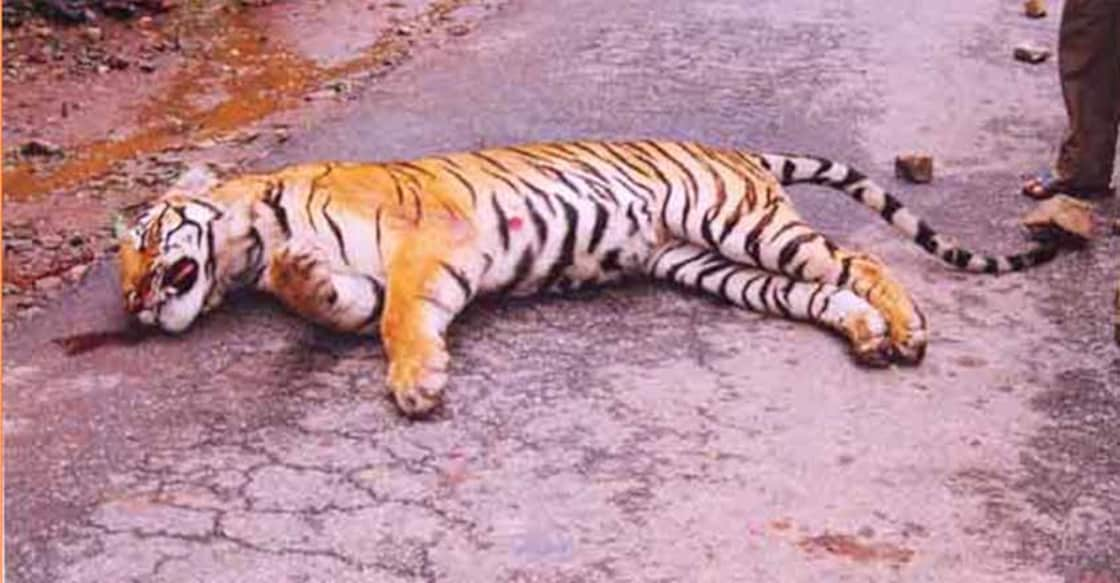Explained | Why people in Wayanad protest traffic ban through Bandipur Tiger Reserve?

Mail This Article
Protests have been raging in Kerala's Wayanad district to lift the night traffic ban on the 19-km stretch of the National Highway-766 passing through Bandipur Tiger Reserve.
The hunger strike by leaders of various political parties entered 12th day on Sunday. On October 1, thousands of students and farmers went on a protest march in solidarity with the hunger strike.
The agitation hogged national headlines when Congress leader and Wayanad MP Rahul Gandhi visited the protesters and offered them support on Sunday.
Night traffic through the tiger reserve was banned in 2009 after studies found that vehicle movement disrupted animal life and even killed them. Since then, the issue has been a bone of contention between those who supported and opposed the ban. What triggered the protest was the Supreme Court's observation that NH-766 should be closed permanently.
Onmanorama explains the reasons for the night traffic ban, its importance and reasons for the current protests.
When was the night traffic ban imposed and why?
On June 3, 2009, the deputy commissioner of the forest wildlife division, Tiger Project, Bandipur division of Chamarajnagar district, passed an order under the Motor Vehicle Act, prohibiting night traffic of motor vehicles of all kinds on NH-212 (now NH 766) between Gundlupet and Sulthan Bathery and on the NH-67 between Gundlupet and Ooty to provide wild animals a reprieve from vehicle movement.
The ban was in place from 9 pm to 6 am for regular vehicles and from 6 pm to 6 am for two-wheelers.
This order was lifted within days on June 10, 2009, as various representations had claimed that the order may cause inconvenience to the people of Wayanad and Kerala.
It was later challenged in the High Court of Karnataka, but the decision was upheld in 2010 and the ban was reinstated. However, emergency vehicles were permitted to enter the region from both states during the restricted duration.
Which stretch is affected by the traffic ban?

NH-766, which connects Kozhikode district in Kerala with Kollegal in Karnataka via Mysore is 272 km in length, and 117 km of this stretch is in Kerala and the rest is in Karnataka. 34.6 km of the highway passes through the Bandipur and Wayanad national parks. The road cuts through 19.7 km of the core zone of Bandipur and 4.5 km of its buffer zone.
The core zone is the most critical part of the reserve, where tigers rest, reside, feed and breed, and the area must be left undisturbed at all costs. In the buffer zone, meant for enhancing the conservation of the core zone, limited activities such as restoration, limited recreation, tourism, fishing, grazing, and research activities may be permitted.
How did the issue reach Supreme Court? What was the apex court's order?
Many rounds of talks between the Kerala and Karnataka chief ministers failed to resolve the issue as Karnataka was firm in its decision on restrictions. It had already built an alternative road at a cost of Rs 75 crore for goods and other traffic to Kerala.
Following this, the Kerala transport department challenged the ban in the Supreme Court by filing a special leave petition. In 2018, a committee constituted by the SC filed a report recommending the continuation of the ban.
In May 2019, the Centre filed an affidavit in the apex court recommending continuation of the nine-hour traffic ban on this highway.
In September 2019, the apex court upheld the ban based on these inputs. The court also questioned the rationality of Kerala government's request to revoke the ban when its neighbouring states Tamil Nadu and Karnataka were ready to accept the decision of the court.

The Supreme Court also directed the Ministry of Environment, Forest and Climate Change and the National Highway Authority of India (NHAI) to suggest alternative routes so that NH-766 could be shut down permanently.
What are the alternatives put forward by the Kerala government?
The Kerala government's proposal to construct five elevated sections, of which four will be in Bandipur and one in Wayanad, on the highway was submitted to the Union Ministry of Road Transport and Highways (MoRTH) for approval much to the anguish of environmentalists. Kerala had decided to share 50 per cent of the Rs 500 crore for constructing the elevated sections.
However, the project is likely to be shelved as the Supreme Court recently directed that even the existing stretch must be closed for traffic once the NHAI completes the upgradation of the alternative alignment.
A convoy system, where a group of vehicles pass through the banned stretch was also discarded by the court.
The other alternative route via SH 90 and NH 275 increases the distance to parts of Karnataka by at least 40 km and passes through forest areas. However, environmentalists argue that these stretches are not core tiger reserve areas like Bandipur.
The alternate road to Mysore is through Mananthavady, Kutta, Gonikoppal, and Hunsur. This alternate route is much longer and completely bypasses Sulthan Bathery (Wayanad), Gundlupet (Karnataka) and Nanjangud (Karnataka).

What are the reasons for the current protests in Wayanad?
The protests began after the Supreme Court observed that NH-766 should be closed permanently. People fear that an alternative route would increases the distance to Gundlupet.
“For people in Sulthan Bathery the distance to Mysuru increases from 98 km to 217 km. They have to first travel for 37 km to Mananthavady to start the journey,” said NH-766 Transportation Protection Action Committee general convenor Suresh Thaloor.
People from all sections of the society, including daily wage labourers from Karnataka, college students, farmers and tourists, are affected by the court order, he added.
The SC's directive to search for alternative routes while upholding the night ban triggered the wide-spread protests.
“These protests are not initiated by any external force. Thousands of students took to the streets to protest against the plight faced by their families,” he said.
Environmental activists are opposing the protests.“It is ironic that the youngsters of Kerala are protesting against the protection of biodiversity when the youngsters elsewhere are engaged in climate activism,” said president of Wayanad Prakruti Samrakshana Samiti N Badusha.
"The agitation that is taking place in Sulthan Bathery against the traffic regulations on NH 766 cannot be considered as a reaction from the whole Wayanad population. The major representation has come from the residents in and around the town of Sulthan Bathery along with a handful of vested interest groups like ginger, resort, havala, gold, religious, and merchant mafias. The sponsorship for this eleven day long strike to date can also be traced back to these lobbies,” Badusha adds.
How did vehicle traffic affect animals in the tiger reserve?

During weekends, the traffic crosses 6,500 vehicles per day. As per official data, there were 93 recorded mortalities of wild animals between 2004 and 2009 before the night traffic ban.
The Bandipur National Park was formed in 1985 by including most of the forest areas of the then Venugopala Wildlife Park and a few other extended areas. The reserve, which was brought under Project Tiger in 1973, along with the Nagarahole, Mudumalai, Sathyamangalam and Wayanad, houses the single largest wild population of tigers in the world. The area, which is also part of the Mysuru Elephant reserve, constitutes the single largest Asian Elephant population in the world besides hosting other diverse species.
Bandipur Tiger Reserve came into being in 2007. The name is derived from a village called Bandipur where the administrative unit of the Tiger Reserve is located.
Has wildlife population increased after the night traffic ban?
The Mudumalai-Bandipur- Nagarhole-Wayanad clutter holds the world's single largest tiger population which was estimated at over 570 tigers in 2014. In 2006, the estimated population of tigers was around 336. The latest estimate released in 2019 records even higher tiger numbers in the Western Ghat area. It is estimated that there are around 6,500 elephants in this landscape.
“Between 2010 and 2018, the number of recorded mortalities reduced to 34 after the ban was imposed,” said Praveen Bhargav, former member of National Board for Wildlife.


